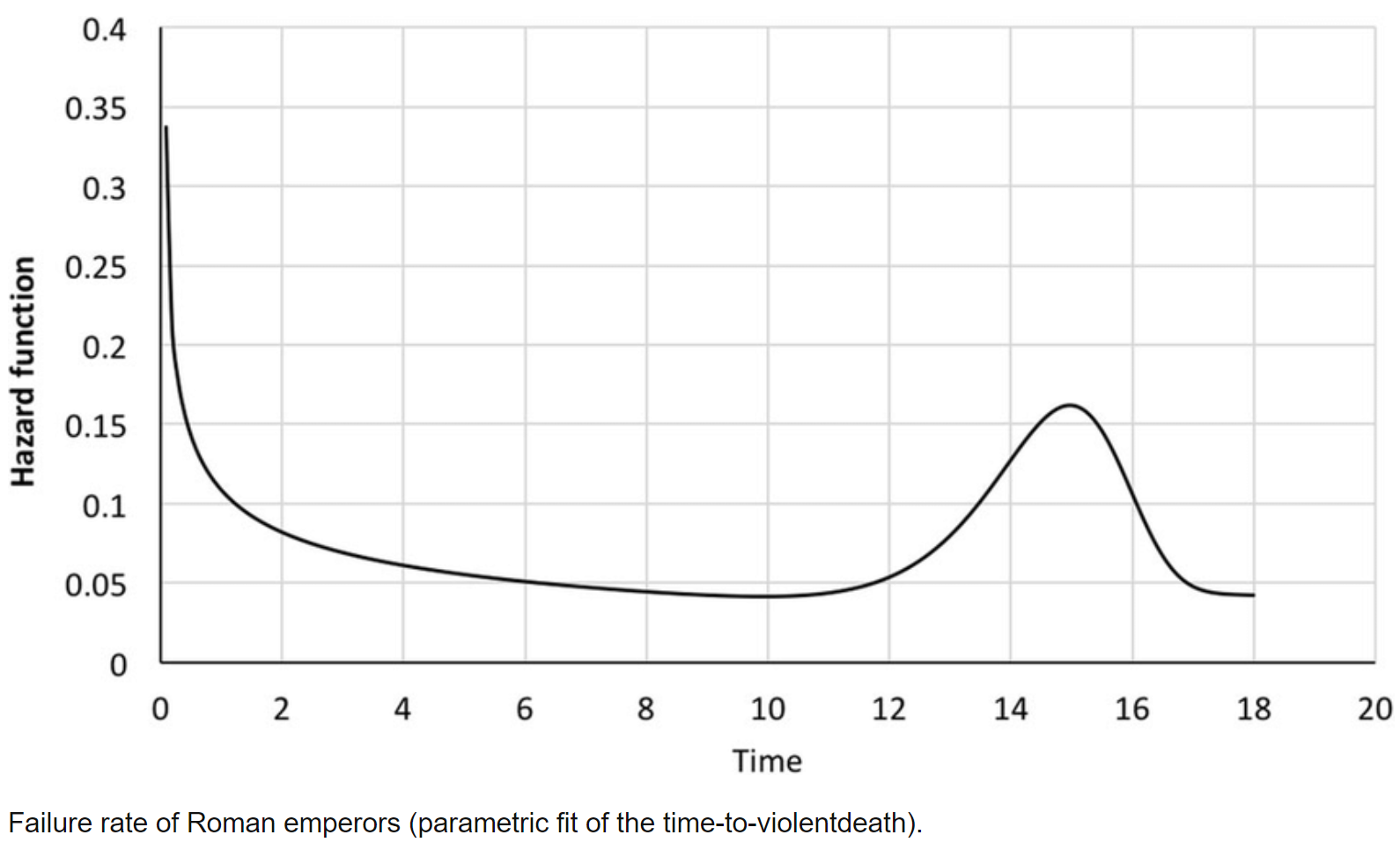Does Your Job Security Match that of a Roman Emperor?
Being a Roman Emperor came with certain upside – power, money, luxury, debauchery (if into that sort of thing)…
With that upside is a high likelihood of suffering a violent death. Fundraising chieftains or those brought in to deliver a new world order won’t be publicly executed but their survival rate likely mirrors that of a Roman Emperor.
It’s the bathtub curve. This wonky model shows the “time-to-failure” – violent death for Roman Emperor or quitting/fired in our world.

The overall odds of survival of a Roman emperor were akin to playing Russian roulette with a six-chambered revolver with 4, not 1 bullet.
But, the insightful part is the curve and when that death is likely to occur.
There’s high likelihood of not surviving in the first 12 months and then relative stability and (literal) breathe until year 12ish where violent death lurks under every Toga.
Does this mirror fundraising tenures?
The first year of leadership change is full of promise, hope, rebirth and high expectations. This isn’t just leadership roles but seems especially so at the higher ranks. If the new hire is truly a bad fit it will end quickly; a “violent death”.
But what of all those new hires doing what was mandated– to rethink, reimagine the business and take chances (i.e. deviate from status quo)– who get fired or quit upon discovering the “mandate” was only good if you could guarantee better outcomes without really changing anything?
That first year is likely perilous for lots of reasons, most of them not good for the organization.
That cunning Roman Emperor could rest easy if they made into year 3 or 4 but the relative calm comes undone with unrest and demands for change after many years of status quo.
This survivability curve matches reliability analysis done by mechanical engineers showing high high failure rate in new products due to faulty parts, poor engineering or poorly designed use cases. Those products surviving the early years work well until wear and tear sets in.
Disruption and change is messy. Status quo is worse but unmeasured, unseen, just lived with, like a glacial paced malaise. We bring folks in to reinvigorate and fire them or force them out when they do. Or we hire folks promising to deliver who are more comfortable with cut and paste.
If one survives this first year or two it’s about maintaining the new normal until folks grow tired of it and seek more messiness. I’m less concerned about the ‘wear and tear’ turnover. At least those folks delivered some step change, if only one step.
The ‘infant mortality’ problem as it’s referred to in product engineering seems the bigger issue.
Kevin


